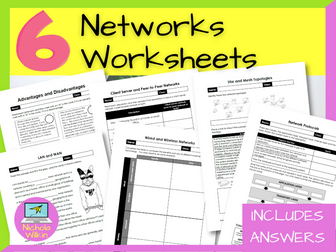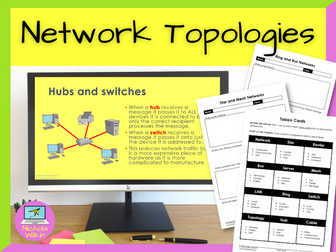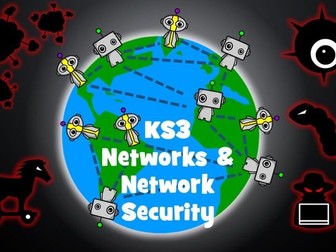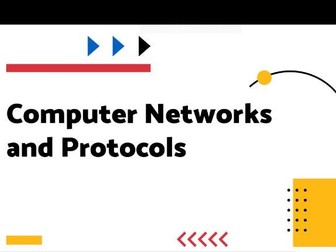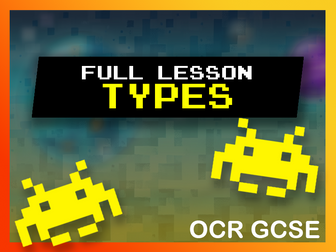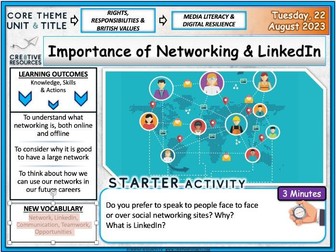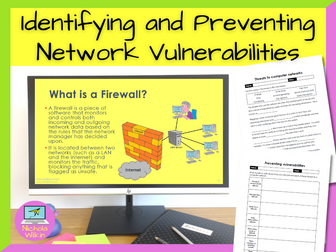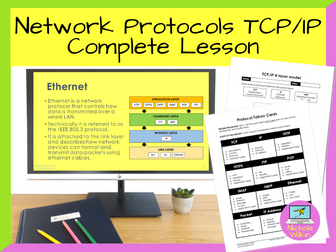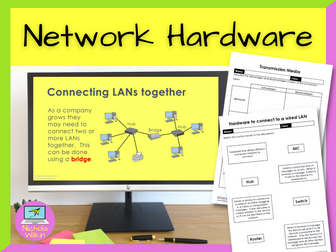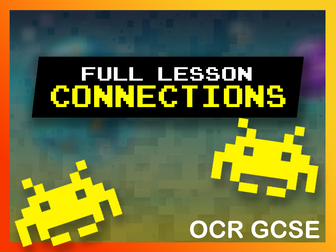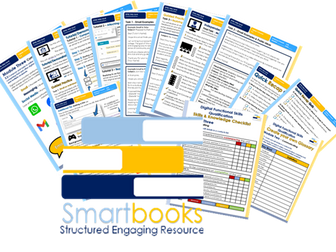Networks Worksheets
<p>Here are 6 ready to use network worksheets you can immediately use with your class with absolutely no preparation necessary.</p>
<p>They can be printed out or completed on-screen as they comprise of PDF files with editable areas for students to enter their answers. You can even assign these worksheets as learning tasks using a VLE for students working at home.</p>
<p>You even have a separate copy of each handout that contains the answers, making these a brilliant easy to use addition to your teacher toolkit.</p>
<p><strong>HOW CAN I USE THEM?</strong><br />
These worksheets are ideal for</p>
<ul>
<li>An easy grab-and-go classroom activity,</li>
<li>homework tasks and</li>
<li>cover worksheets.<br />
.</li>
</ul>
<p>These engaging worksheets are perfect for computer science teachers, non-specialists and new teachers.</p>
<p><strong>WHAT IS INCLUDED?</strong><br />
The 6 PDF worksheets included:</p>
<ol>
<li>
<p>Advantages and Disadvantages of Networks – An easy worksheet where students are given a number of statements and need to decide if it is an advantage of disadvantage of using a computer network. A great starter worksheet when first introducing networks.</p>
</li>
<li>
<p>LAN and WAN Fill in The Gaps – Students use a list of given words to complete the short text about Local Areas Networks and Wide Area Networks. A nice plenary activity to recap what they have learnt.</p>
</li>
<li>
<p>Client Server and Peer-to-Peer Networks – A mid-level worksheet where pupils need to decide if the statement is about a client server network or a peer-to-peer network, or both.#</p>
</li>
<li>
<p>Wire and Wireless Networks – Pupils need to do a bit of research and write about the benefits and risks of using ethernet copper cables, fiber optic cables, Bluetooth networks and wi-fi networks. Great as a homework task.</p>
</li>
<li>
<p>Star and Mesh Topologies – Students identify a star and a mesh diagram from a drawing. They are also given several scenarios and have to decide if a star or a mesh topology would better fit the needs described. Finally students must write about the difference between a switch and a hub. Great as a homework task.</p>
</li>
<li>
<p>Network Protocols – match the protocol layer to the description and then identify the protocols which are in a 4-layer TCP/IP protocol layer. A higher level worksheet that is great for assessing pupils understanding of a 4-lay TCP/IP protocol.</p>
</li>
</ol>
<p>Don’t forget the answers to each worksheet are included meaning you can use the answers yourself or give them to students for self-marking.</p>
<p>These 6 worksheets will quickly become an essential tool in your teacher toolkit.</p>
<p>They are a great way to break up the lesson, reinforce the learning and check your pupils’ understanding of networks.</p>
<p>What are you waiting for? Buy them now and use them straight away to enhance your lessons whilst saving yourself hours of preparation.</p>
